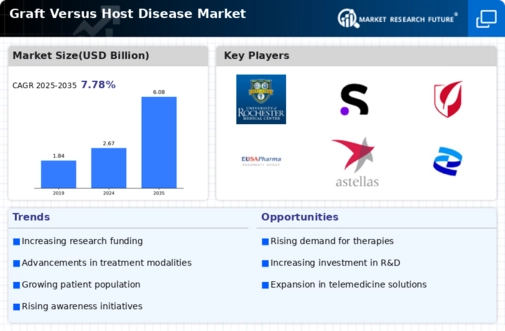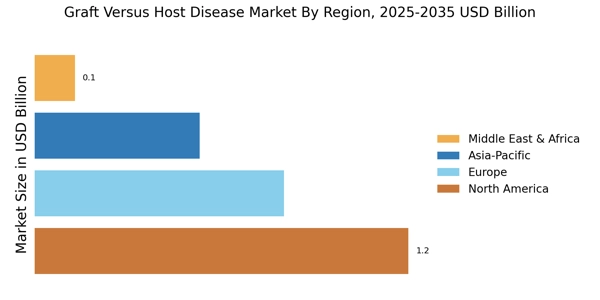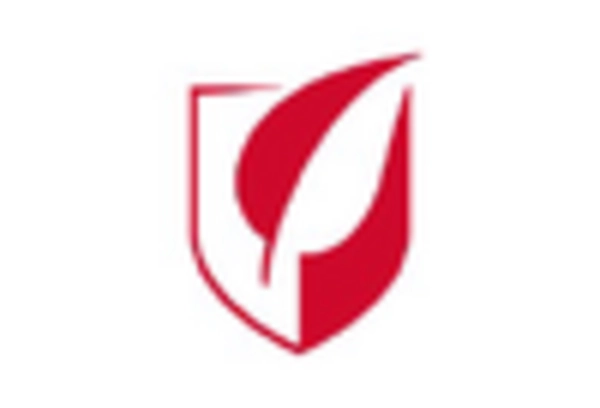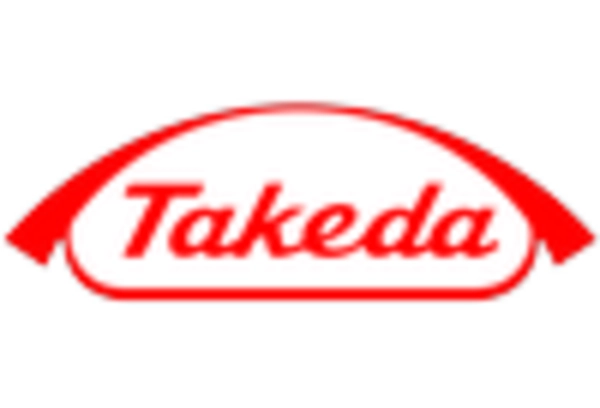Advancements in Treatment Modalities
Recent advancements in treatment modalities for Graft Versus Host Disease Market are significantly influencing the Graft Versus Host Disease Market. The introduction of novel therapies, including targeted biologics and immunosuppressive agents, has shown promise in improving patient outcomes. For instance, the use of monoclonal antibodies has been associated with reduced incidence and severity of GVHD. Market data suggests that the immunosuppressive drug segment is expected to witness substantial growth, driven by the increasing adoption of these advanced therapies. As research continues to unveil new treatment options, the Graft Versus Host Disease Market is poised for further expansion, catering to the evolving needs of patients and healthcare providers.
Rising Awareness and Education Initiatives
Rising awareness and education initiatives regarding Graft Versus Host Disease Market are playing a pivotal role in shaping the Graft Versus Host Disease Market. Healthcare professionals are increasingly educated about the complexities of GVHD, leading to improved diagnosis and management strategies. Patient advocacy groups are also contributing to this awareness by providing resources and support for affected individuals. This heightened awareness is likely to result in earlier detection and treatment of GVHD, which could drive demand for therapeutic interventions. Consequently, the Graft Versus Host Disease Market may experience growth as more patients seek effective treatments and healthcare providers become more proactive in managing this condition.
Regulatory Support and Accelerated Approvals
Regulatory support for new therapies is a crucial driver for the Graft Versus Host Disease Market. Regulatory agencies are increasingly adopting expedited approval pathways for innovative treatments aimed at addressing GVHD. This trend is evident in the recent approvals of several therapies that have demonstrated significant efficacy in clinical trials. The availability of fast-track designations and priority review vouchers encourages pharmaceutical companies to invest in GVHD research. As a result, the Graft Versus Host Disease Market is likely to benefit from a more rapid introduction of new therapies, enhancing treatment options for patients and potentially improving market dynamics.
Growing Investment in Research and Development
The Graft Versus Host Disease Market is experiencing a surge in investment directed towards research and development. Pharmaceutical companies and biotechnology firms are increasingly allocating resources to discover and develop innovative therapies for GVHD. This trend is supported by the potential for high returns on investment, given the unmet medical needs in this area. Data indicates that R&D spending in the field of hematology is on the rise, with a focus on developing effective GVHD treatments. This influx of capital is likely to accelerate the pace of innovation, leading to the introduction of new products and therapies that could reshape the Graft Versus Host Disease Market.
Increasing Incidence of Graft Versus Host Disease
The rising incidence of Graft Versus Host Disease Market (GVHD) is a primary driver for the Graft Versus Host Disease Market. As more patients undergo hematopoietic stem cell transplantation, the likelihood of developing GVHD increases. Reports indicate that approximately 30 to 50% of allogeneic transplant recipients experience some form of GVHD. This growing patient population necessitates the development of effective therapies and management strategies, thereby propelling market growth. Furthermore, the increasing awareness among healthcare professionals regarding the early diagnosis and treatment of GVHD is likely to enhance patient outcomes, which in turn could stimulate demand for innovative products within the Graft Versus Host Disease Market.


















Leave a Comment